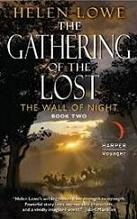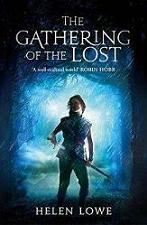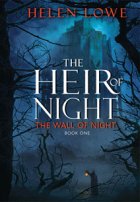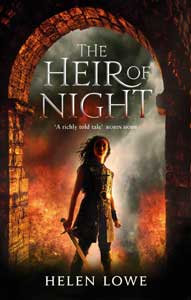Celebrating Waitangi Day & Cross-Culturalism In New Zealand Literature
In 2012, I talked about NZ’s chequered history of nationhood, but my belief that we still have something to celebrate every year on February 6. You can read more under:
Waitangi Day: “He Iwi Kotahi Tatou”
As a writer, one area where celebration is more than appropariate, in my view, is in NZ’s literature. In 2012, I looked at the significant contribution to NZ literature from authors who identify as Maori, with specific mention of Keri Hulme, Witi Ihimaera, and Patricia Grace.
 Last year, I looked at books that had influenced me and which I felt “spoke” to New Zealand’s cross-cultural heritage in an authentic way, referencing authors as diverse as mid-twentieth century children’s writer, Joyce West’s classic, The Year Of The Shining Cuckoo, and Kelly Ana Moray’s more recent Bloom.
Last year, I looked at books that had influenced me and which I felt “spoke” to New Zealand’s cross-cultural heritage in an authentic way, referencing authors as diverse as mid-twentieth century children’s writer, Joyce West’s classic, The Year Of The Shining Cuckoo, and Kelly Ana Moray’s more recent Bloom.
This year I am going to offer a few, even more recent, examples of the strong and vibrant cultural expression of Aotearoa-New Zealand through our literature, both from the perspective of Tangata Whenua (the NZ Māori people, literally “the people of the land”) but also different strands of Tangata Tiriti—all the people who live here in NZ legitimately because of the signing of the Treaty of Waitangi (Te Tiriti O Waitangi) in 1840, including people of European descent (“Pākehā”) but also Pasifika, Chinese, Indian, and many other nationalities.
 One of NZ’s standoutbooks of 2014 was Tina Makereti’s Where The Rēkohu Bone Sings, (Random House, 2014) which won the Ngā Kupu Ora Aotearoa Māori Book Award For Fiction. As the jacket says: “From the Chatham Islands/Rēkohu to London, the 21st century to 1835, this novel confronts the complexity of being Moriori, Māori and Pākehā” — and it would be hard to get more cross-cultural than that.
One of NZ’s standoutbooks of 2014 was Tina Makereti’s Where The Rēkohu Bone Sings, (Random House, 2014) which won the Ngā Kupu Ora Aotearoa Māori Book Award For Fiction. As the jacket says: “From the Chatham Islands/Rēkohu to London, the 21st century to 1835, this novel confronts the complexity of being Moriori, Māori and Pākehā” — and it would be hard to get more cross-cultural than that.
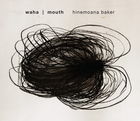 Another great cross-cultural work is poet Hinemoana Baker’s latest collection waha | mouth (VUP, 2014) which draws on both the Māori and Pākehā strands in the poet’s whakapapa (genealogy.)
Another great cross-cultural work is poet Hinemoana Baker’s latest collection waha | mouth (VUP, 2014) which draws on both the Māori and Pākehā strands in the poet’s whakapapa (genealogy.)
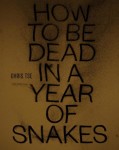 Again in poetry, I was also impressed by Chris Tse’s How To Be Dead In A Year Of Snakes (AUP, 2014), a collection which addresses the story of Joe Kum Yung, an elderly man randomly gunned down in a Wellington street in 1905 by a Pākehā man who used the resulting murder charge to draw attention to his racist ideals.
Again in poetry, I was also impressed by Chris Tse’s How To Be Dead In A Year Of Snakes (AUP, 2014), a collection which addresses the story of Joe Kum Yung, an elderly man randomly gunned down in a Wellington street in 1905 by a Pākehā man who used the resulting murder charge to draw attention to his racist ideals.
As noted in Renee Liang’s insightful interview, “In examining this story, Tse lays out the tangled threads of culture, history and memory, questioning his own role as watcher and historian.”
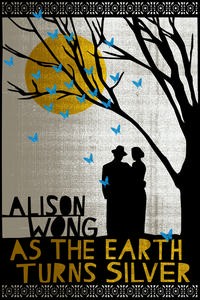 The murder of Joe Kum Yung informs the early part of Alison Wong’s historical novel As The Earth Turns Silver, (Penguin, 2009) as well—but in the case of How To Be Dead In A Year Of Snakes, one of the poems that particularly struck me was the one Renee featured on The Tuesday Poem: SS Ventnor.
The murder of Joe Kum Yung informs the early part of Alison Wong’s historical novel As The Earth Turns Silver, (Penguin, 2009) as well—but in the case of How To Be Dead In A Year Of Snakes, one of the poems that particularly struck me was the one Renee featured on The Tuesday Poem: SS Ventnor.
The poem addresses the story of the SS Ventnor – a ship wrecked off the Hokianga coastline in 1902 while carrying the coffins of 499 Chinese men back home to their families:
‘->
kawe mate
.
The departed cargo
thought doomed
.
…………………………..to forgetful waters
.
instead finds its way
to open shores
.
……………………rescued by the people of the land.”
.
As noted in the commentary on the poem:
“…After the Ventnor sank, all the coffins and the lives of 13 crewmen lost, some of the coffins floated ashore. They were found by local Maori who recognised them as human remains and buried them in their own urupa (cemeteries). Kawe Mate refers to spiritual repatriation, the taking of memories and images home to family; te rerenga wairua is the place, at the very tip of Northland (Cape Reinga) where the spirits leap into the ocean, taking one last look back at the land they are leaving; karakia is prayer. In using these terms, Tse declares the universality of our cultural beliefs: “death is the common ground.” To die is to be claimed by your loved ones. Without family, without a place to ‘land’, you might as well have never existed. But Tse touches on notes of hope. Stranded in a foreign land, others can take the place of family.”
In reflecting on themes of cross-culturalism in New Zealand literature in honour of Waitangi Day, I cannot think of a more apposite poem or quote.
To read the poem and the commentary in full, click on:
The Tuesday Poem: SS Ventnor by Chris Tse
—
To find out more about the writers featured today, and their work, click on:
Renee Liang — I also enjoyed this interview with Renee in the NZ herald last year: Twelve Questions with Dr Renee Liang


